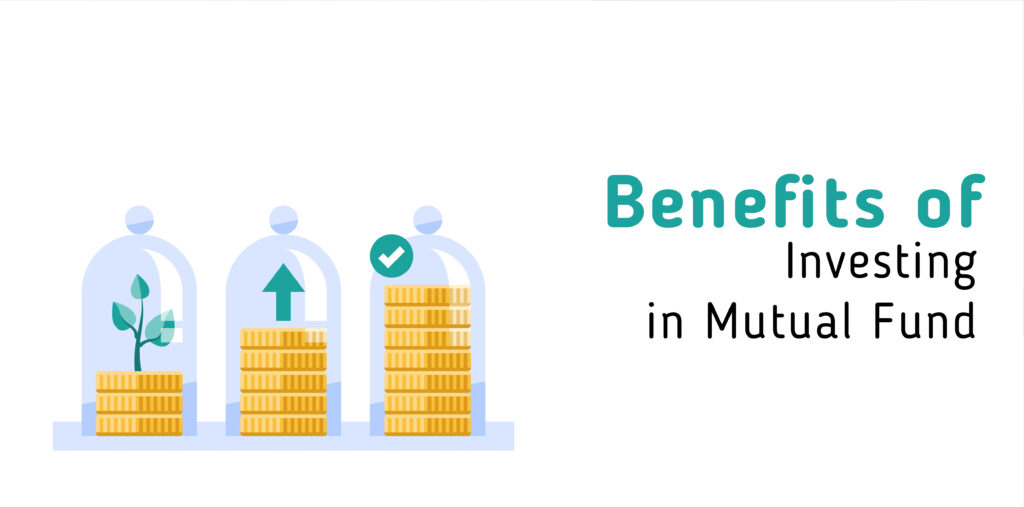Mutual funds are a popular investment option for many individuals, offering the potential for diversification and professional management. However, like any investment, mutual funds carry a certain level of risk. As an investor, it is important to understand and measure the risks associated with mutual funds in order to make informed investment decisions.
Let’s take a closer look at the different types of risk measures available, and how they work. We’ll also explore why risks in mutual funds are important to measure for the investors before making any investments.
There are different types of mutual funds risk measurements available. They are:
The standard deviation is a commonly used risk to measure the volatility of a mutual fund. It works by analyzing the historical returns of the fund over a specific period, usually three to five years. The standard deviation is a statistical measure that calculates the degree to which the fund’s returns vary from its average return. The higher the standard deviation, the higher the risk associated with the fund.
For example, suppose a mutual fund has an average annual return of 10% with a standard deviation of 15%. This means that the fund’s returns can vary by plus or minus 15% from its average return. In other words, in any given year, the fund’s return could be as low as -5% or as high as 25%.
Investors who are comfortable with taking on higher levels of risk may choose to invest in mutual funds with higher standard deviations, as these funds have the potential to generate higher returns. However, investors who are risk-averse may prefer to invest in mutual funds with lower standard deviations, which offer more stable returns but lower potential for higher returns.
- Sharpe Ratio:
The Sharpe Ratio is another commonly used tool to measure the risk associated with a mutual fund. This tool takes into account the fund’s return, as well as the level of risk taken to achieve that return.
The Sharpe Ratio is calculated by subtracting the risk-free rate from the mutual fund’s return and then dividing that by the standard deviation of the fund’s returns. The risk-free rate is the return an investor would receive if they invested in a risk-free asset such as a government bond.
For example, suppose a mutual fund has an average annual return of 15% over the past three years, and the risk-free rate is 3%. The fund’s standard deviation is 10%. Using these figures, we can calculate the Sharpe Ratio as follows:
(15% – 3%) / 10% = 1.2
A higher Sharpe Ratio indicates that the mutual fund has generated higher returns relative to the amount of risk taken. A lower Sharpe Ratio indicates that the fund has generated lower returns relative to the amount of risk taken. Investors who are looking for mutual funds with high risk-adjusted returns may consider investing in funds with higher Sharpe Ratios.
- The Value-at-Risk (VaR):
The Value-at-Risk (VaR) is a tool that calculates the maximum amount of money that an investor can expect to lose with a specified level of probability over a certain time period. To calculate the VaR, the mutual fund’s historical returns are analyzed over a specific period, usually three to five years, and then sorted from highest to lowest. The VaR is then determined by calculating the amount of money that an investor can expect to lose with a certain level of probability, such as 95%, over the specified time period.
For example, suppose a mutual fund has a VaR of 10% with a confidence level of 95% over a one-year period. This means that there is a 95% chance that an investor will not lose more than 10% of their investment over the next year.
Investors who are risk-averse may prefer mutual funds with lower VaRs, as they provide a greater level of downside protection. However, mutual funds with higher VaRs may be more suitable for investors who are comfortable with taking on higher levels of risk in exchange for potentially higher returns.
The VaR is based on historical data, and past performance may not necessarily predict future results. Therefore, it’s essential to consider other factors, such as the types of securities held by the mutual fund, the fund’s expense ratio, and the fund’s performance relative to its benchmark, before making any investment decisions.
- R-squared:
R-squared is a statistical measure that helps investors understand how much of a mutual fund’s performance can be attributed to the overall market performance. It’s a common measure used to evaluate the degree of correlation between a mutual fund and its benchmark index.
The R-squared value ranges from 0 to 1, with 0 indicating no correlation and 1 indicating perfect correlation. An R-squared value of 1 means that the mutual fund’s performance is entirely explained by the performance of its benchmark index. On the other hand, an R-squared value of 0 means that the mutual fund’s performance is entirely unrelated to its benchmark index.
When evaluating mutual funds, a higher R-squared value is generally preferred, indicating a closer relationship between the mutual fund’s performance and its benchmark index. This is because investors typically want to track the benchmark index, and a mutual fund with a higher R-squared value is more likely to provide similar returns as the benchmark.
- Beta:
Beta is a measure of the volatility of a mutual fund’s returns relative to the overall market. It helps investors understand how much a mutual fund’s returns move in response to changes in the market. A beta of 1 means that the mutual fund’s returns move in tandem with the overall market, while a beta of less than 1 indicates that the mutual fund is less volatile than the market, and a beta greater than 1 indicates that the mutual fund is more volatile than the market.
For example, if a mutual fund has a beta of 1.2, it’s expected to have returns that are 20% more volatile than the overall market. Conversely, if a mutual fund has a beta of 0.8, it’s expected to have returns that are 20% less volatile than the overall market.
Beta is a useful measure when evaluating mutual funds because it helps investors understand how much risk a mutual fund is taking relative to the overall market. A higher beta means that the mutual fund is more volatile than the market, which may not be suitable for investors looking for a low-risk investment. Conversely, a lower beta means that the mutual fund is less volatile than the market, which may be suitable for investors looking for a less risky investment. Nevertheless, it’s important to note that beta is not a perfect measure of risk.
- Alpha:
Alpha is a measure of a mutual fund’s risk-adjusted performance relative to its benchmark index. It helps investors understand how much value a mutual fund manager has added or subtracted from the portfolio’s returns, above or below what the benchmark would have earned. The alpha value is calculated by comparing the mutual fund’s actual returns with the expected returns based on its beta and the overall market returns.
For example, suppose a mutual fund has an alpha of 1.0. In that case, it means that the mutual fund has generated a return of 1.0% above what the benchmark would have earned, after adjusting for the mutual fund’s beta.
Alpha is a useful measure when evaluating mutual funds because it helps investors understand how much value the mutual fund manager has added or subtracted from the portfolio’s returns relative to its benchmark. If a mutual fund’s actual returns are higher than the expected returns, it has a positive alpha, indicating that the mutual fund manager has added value to the portfolio. Conversely, if a mutual fund’s actual returns are lower than the expected returns, it has a negative alpha, indicating that the mutual fund manager has subtracted value from the portfolio.
- The Sortino ratio:
The Sortino ratio is a risk-adjusted performance measure that helps investors evaluate the returns of a mutual fund relative to its downside risk. It’s similar to the Sharpe ratio but focuses only on the downside risk of a mutual fund, while the Sharpe ratio considers both upside and downside risk.
The Sortino ratio is calculated by dividing the mutual fund’s excess return over a risk-free rate by its downside deviation. The downside deviation measures the volatility of the mutual fund’s returns below a specific target return, often the minimum acceptable return or the risk-free rate.
A higher Sortino ratio indicates that the mutual fund has generated higher returns for the amount of downside risk taken. A lower Sortino ratio indicates that the mutual fund has generated lower returns for the amount of downside risk taken.
For example, suppose a mutual fund has a Sortino ratio of 1.5. In that case, it means that the mutual fund has generated 1.5 units of return for each unit of downside risk taken, relative to a risk-free rate.
The Sortino ratio is a useful measure when evaluating mutual funds because it helps investors understand how much return the mutual fund has generated relative to its downside risk. This is particularly important for investors who are more concerned with protecting their investments from losses than generating high returns. Again, it’s essential to understand that no single measure of risk can provide a complete picture of a mutual fund’s risk level, and it’s best to consider multiple measures of risk when evaluating mutual funds.
Conclusion:
Measuring risk in mutual funds is essential for investors to make informed investment decisions. By understanding the various measures of risk, investors can determine the level of risk they are comfortable with and select mutual funds that fit their investment objectives. It’s also important to keep in mind that higher risk doesn’t always mean higher returns, and it’s important to diversify investments to manage risk effectively.
It’s important to note that no single measure of risk can provide a complete picture of a mutual fund’s risk level, and it’s best to consider multiple measures of risk when evaluating mutual funds. Additionally, it’s essential to understand that past performance doesn’t guarantee future results, and there is always a risk involved in investing. Investors should consult with a financial advisor before making any investment decisions.






